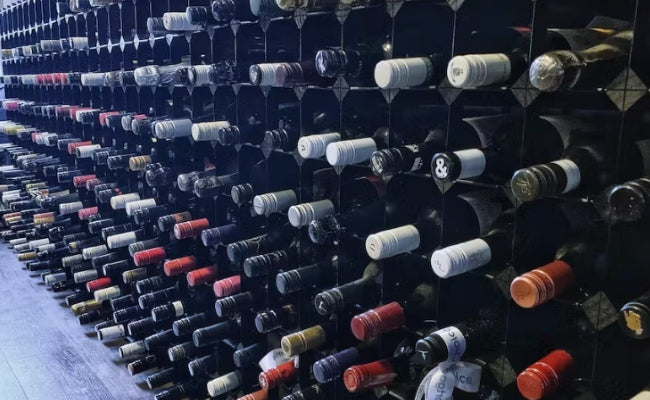
Deciphering Wine Color: Understanding its Significance and Evaluation Techniques
Wine color is one of the first things that grabs our attention when we pour a glass. It not only adds to the visual appeal of wine but also provides valuable information about its characteristics and quality. In this article, we will delve into the science and significance behind wine color and explore the techniques used to evaluate it accurately.
The Science Behind Wine Color
At the heart of wine color is the role grapes play and the chemical compounds found in their skins, seeds, and stems. These compounds, known as anthocyanins, are responsible for the various shades of red, purple, and blue in red wines. The intensity of these colors is determined by factors such as grape variety, climate, soil, and winemaking techniques.
The Role of Grapes in Determining Wine Color
The choice of grape variety has a significant impact on the color of wine. For example, Cabernet Sauvignon grapes produce deeply colored wines with hues ranging from deep purple to ruby red, while Pinot Noir grapes result in lighter, more translucent red wines.
In addition to the choice of grape variety, the level of ripeness at which the grapes are harvested also affects the color of the resulting wine. Grapes harvested earlier tend to produce wines with brighter, more vibrant colors, while grapes left to ripen for a more extended period develop deeper, richer hues.
But the influence of grapes doesn't stop there. The skin-to-juice ratio also plays a role in determining wine color. Grapes with thicker skins tend to have more intense color extraction during fermentation, resulting in wines with a deeper and more concentrated hue. On the other hand, grapes with thinner skins may produce wines with a lighter color profile.
The Impact of Fermentation on Wine Color
During the fermentation process, the skins of the grapes come into contact with the juice, allowing the extraction of color compounds. The time that the skins are left in contact with the juice, known as maceration, determines the depth and intensity of the wine's color.
Winemakers can also control the level of extraction by adjusting factors such as temperature, pH, and the use of different fermentation vessels. These decisions play a crucial role in the final color profile of the wine.
The yeast used in fermentation can also have an impact on wine color. Certain yeast strains have enzymes that can break down anthocyanins, producing a lighter-colored wine. This is why winemakers carefully select the yeast strains they use, as it can significantly influence the final color of the wine.
How Aging Affects the Color of Wine
As wines age, their colors change due to chemical reactions in the bottle. Reds lose their youthful brightness and shift towards a more orange or brownish hue. This is particularly true for wines that have been aged in oak barrels, as the tannins present in oak can further influence the color profile of the wine.
White wines typically gain color with age, developing a deeper golden or amber shade. This is caused by the oxidation of the phenolic compounds present in the wine, resulting in a more complex color palette.
It's important to note that the aging process is not only influenced by time but also by storage conditions. Factors such as temperature, humidity, and light exposure can all impact the rate at which a wine's color evolves over time. This is why proper cellaring techniques are essential for preserving the integrity of a wine's color as it ages.
The Significance of Wine Color
While wine color is undoubtedly visually appealing, its importance goes beyond mere aesthetics. The color of wine provides valuable insights into its taste, quality, and origin.
Wine Color and Taste: An Inseparable Connection
The color of wine is intrinsically linked to its taste profile. For example, lighter-colored red wines tend to be lighter in body and possess more delicate flavors, while darker-colored reds often showcase fuller-bodied characteristics with richer, more pronounced flavors.
But did you know that the color of wine can also indicate the age of the wine? As red wines age, they tend to lose their vibrant hues and develop more brick-like tones. This change in color is a result of chemical reactions that occur within the wine, leading to the development of complex flavors and aromas.
White wines also exhibit a correlation between color and taste. Bright, pale-colored whites are generally light-bodied and refreshing, while deeper, golden tones often indicate a more complex, oak-aged white wine with a fuller mouthfeel.
Wine Color as an Indicator of Quality
When it comes to evaluating the quality of wine, color plays a crucial role. In red wines, intensity, brightness, and uniformity of color are indicators of a well-made wine. Wines with faded or uneven colors may suggest poor winemaking techniques or age-related issues.
But there's more to it than just the color itself. The way the color clings to the sides of the glass, forming what is known as "legs" or "tears," can also provide insights into the wine's quality. Wines with thicker, slower-moving legs often indicate higher alcohol content and more viscosity, suggesting a wine with greater body and intensity.
For white wines, the clarity and brilliance of the color are essential factors in gauging their quality. A wine with a dull or hazy appearance may suggest deficiencies in the winemaking process.
Wine Color and Region: A Global Perspective
Thanks to the tremendous diversity in grape varieties and winemaking techniques across different regions, wine color can also be an excellent indicator of regional identity. For example, the deep, inky purple color of Malbec from Argentina is distinct from the lighter, garnet hues commonly associated with Sangiovese from Tuscany, Italy.
But did you know that the color of wine can also be influenced by the climate and soil of a particular region? In cooler climates, grapes tend to produce wines with higher acidity and lighter colors, while warmer climates often result in wines with deeper, more intense colors and flavors.
The color profiles of wines can provide clues about the grape varieties and terroir unique to specific regions, allowing wine enthusiasts to explore and appreciate the world of wine on a deeper level. So, the next time you pour yourself a glass of wine, take a moment to appreciate its color and all the fascinating stories it has to tell.
Techniques for Evaluating Wine Color
Accurate evaluation of wine color requires a systematic approach that takes into account various factors. Let's explore some techniques commonly used by professionals:
Visual Inspection: The First Step in Wine Evaluation
Before delving into more technical methods, a simple visual inspection can provide valuable information about the color and condition of the wine. Professionals examine the wine's clarity, brilliance, and color intensity against a white background to gauge its overall quality.
During this visual inspection, experts also pay attention to the wine's viscosity, which can indicate its body and alcohol content. A slow, thick flow suggests a fuller-bodied wine, while a thin, watery flow may indicate a lighter style.
Using a Wine Color Chart for Accurate Assessment
Wine color charts, often used in professional tastings, provide a standardized reference system to assess the color of wines. This tool enables tasters to describe and compare the color of different wines accurately.
These charts typically feature a range of color shades, from pale yellows to deep purples, allowing tasters to identify the specific color characteristics and intensity of a given wine. Moreover, some advanced wine color charts even include descriptors for secondary hues, such as green or brown, which can provide additional insights into a wine's age and condition.
Advanced Techniques: Spectrophotometry in Wine Color Evaluation
For a more precise evaluation of wine color, professionals rely on spectrophotometry. This technique measures the absorption of light by wine samples at specific wavelengths, providing detailed data on color components such as hue, chroma, and total anthocyanin content.
By analyzing the spectrophotometric data, experts can determine the exact color composition of a wine, including the presence of specific pigments and their concentrations. This information is crucial for winemakers as it helps them understand the impact of viticultural and winemaking practices on the final color of their wines.
Spectrophotometry allows for objective comparisons and analysis, providing winemakers with valuable information for adjusting their winemaking practices to achieve desired color outcomes. Furthermore, this technique is also used in research and development to study the effects of different grape varieties, fermentation techniques, and aging processes on wine color.
The Art of Wine Tasting: How Color Plays a Role
Wine tasting is a multisensory experience, and color plays a significant role in enhancing our perception. Let's explore how color influences the wine tasting process:
Wine Color and the Tasting Process
Before even taking a sip, the visual appearance of the wine sets the stage for the tasting experience. The color informs our expectations of the wine's aroma, taste, and overall character.
For example, a bright, ruby-red wine may suggest fresh and fruity aromas, while a deep, aged-looking red might indicate richer, more complex aromatics. By observing the color, tasters can mentally prepare themselves for what they are about to taste.
Interpreting Wine Color During Tasting
While tasting the wine, our perception of its color can continue to evolve and influence our sensory experience. It can provide clues about the wine's level of aging, acidity, sweetness, and tannin presence, among other characteristics.
For instance, a Sauvignon Blanc with a pale, greenish hue may suggest high acidity, while a Chardonnay with a deep golden color might hint at a fuller body and potential oak influence.
Enhancing Your Wine Tasting Experience: The Role of Color Perception
Understanding how color affects our wine tasting experience can help enhance our enjoyment and appreciation of the beverage. By paying attention to the color variations in different wines, we can develop our ability to detect subtle nuances and better understand the complex world of wine.
But what exactly causes these color variations in wine? The color of wine comes from pigments found in the grape skins, which are released into the juice during the winemaking process. The type of grape, the ripeness of the fruit, and the winemaking techniques used all contribute to the final color of the wine.
The color of wine can also change over time. Red wines, for example, can develop a more brick-like hue as they age, while white wines may become darker or more golden. These changes in color can provide valuable insights into the wine's maturity and potential for further aging.
Deciphering wine color is an essential aspect of wine appreciation. It offers a glimpse into the intricate relationship between grapes, winemaking techniques, and the sensory experience that awaits us in each glass. So, next time you pour yourself a glass of wine, take a moment to observe its color and reflect on the fascinating journey it begins.








